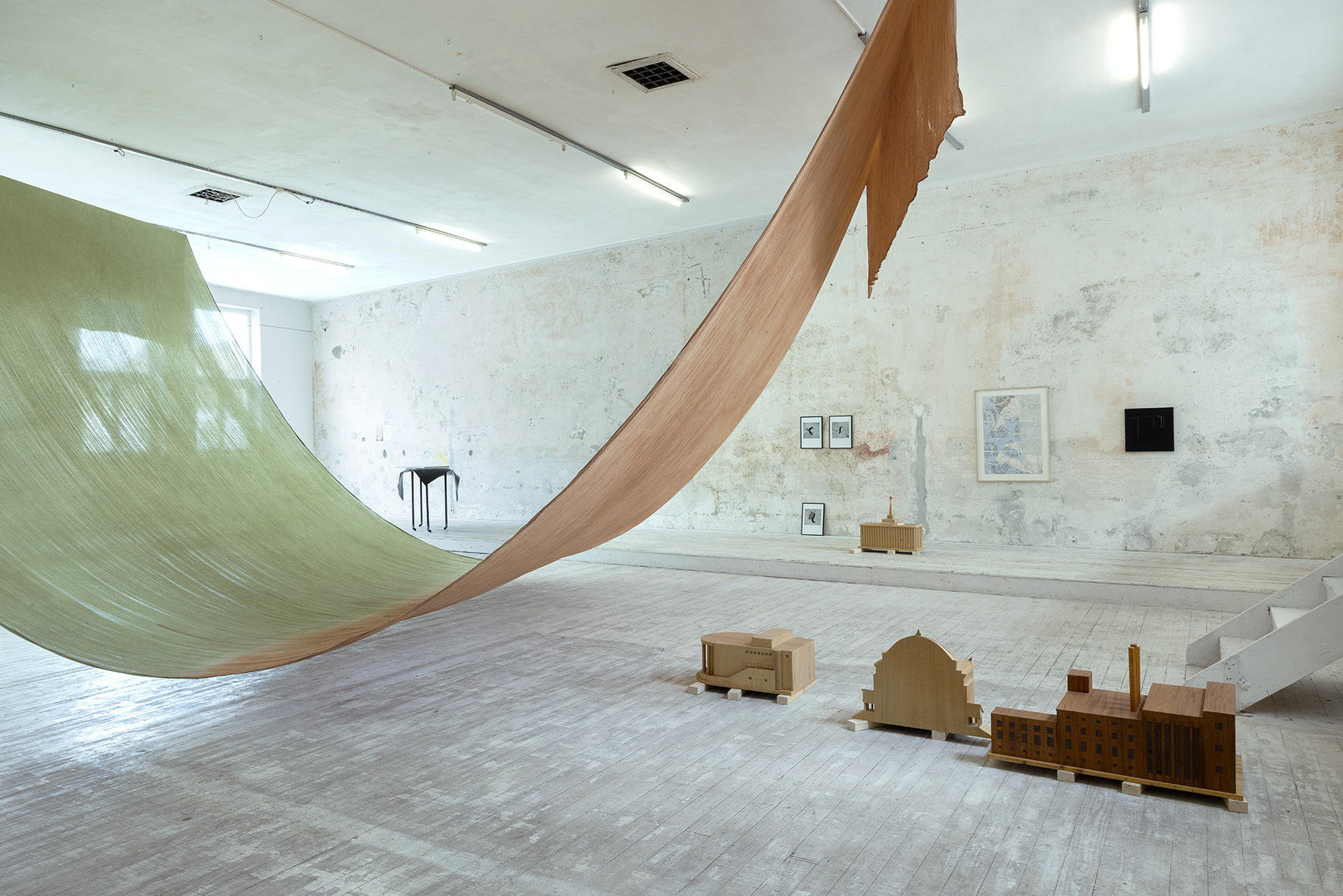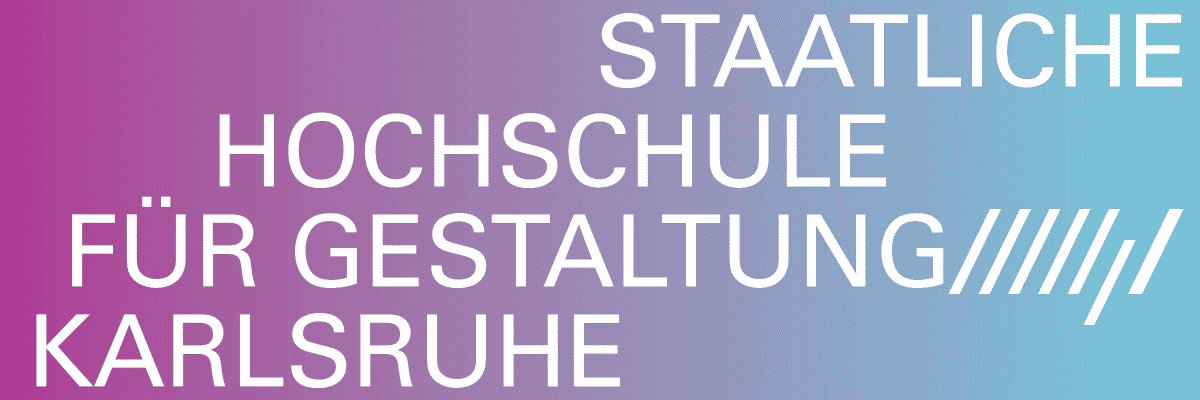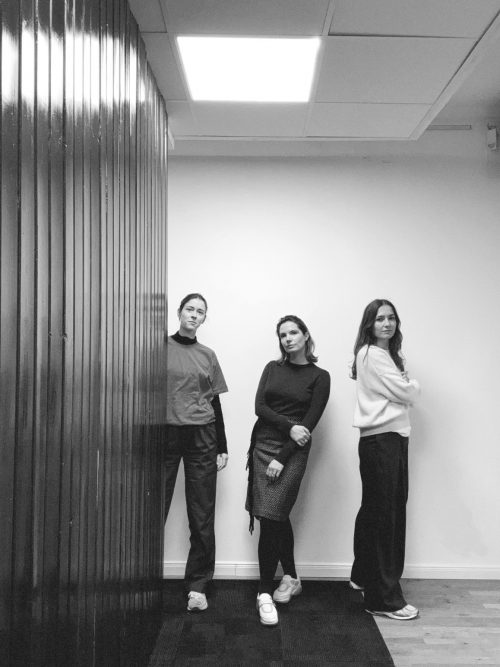
Adriana Czernin, Katrina Daschner, Assaf Evron, Ben G. Fodor / TIME GATES, Johannes Lakinger, Christian Kosmas Mayer, Thea Moeller, Constanze Schweiger
the artist's intelligence
Project Info
- 💙 Kunstverein Schattendorf
- 💚 Siggi Hofer
- 🖤 Adriana Czernin, Katrina Daschner, Assaf Evron, Ben G. Fodor / TIME GATES, Johannes Lakinger, Christian Kosmas Mayer, Thea Moeller, Constanze Schweiger
- 💜 Siggi Hofer
- 💛 Michael Strasser
Share on

installation view
Advertisement

installation view

installation view

left: Adriana Czernin, untitled, coloured pencil, pencil on paper, 78,5 x 62,5 cm, 2003; right: Katrina Daschner, Faltenwurf (grün), threads on paper, 44 x 44 cm, 2018

Assaf Evron, I want to believe Sea Cucumbers are happy left: (GOPR4975.JPG) right: (GOPR4964.JPG) below (GOPR5071.JPG), digital silver gelatine print, 20 x 23 cm, 2023

installation view

Christian Kosmas Mayer, information sign for tempo rubato, each 29,7 x 21 cm, left: 2010 right: 2025

Thea Moeller, left: 1874 (Dancer), steel, water jet cut rubber sheet, stanley knife cut rubber sheet, tulle, 136 x 50 x 87 cm, 2025 left: 1963 (Academy of Magical Arts), steel structure, rubber plate, painted chipboard, 100 x 160 x 98 cm, 2025

Johannes Lakinger, Windowsill, wood, aluminium, paper, animal glue, left: 135 x 30 x 9 right: 134 x 37 x 8, 2025

installation view

Constanze Schweiger, Green Earth for Schattendorf, earth pigment, raw and burnt, cotton muslin, steel rope, 1500 x 500 cm, 2025

Johannes Lakinger, Border, animal glue, pigment, 2025

Ben G. Fodor / TIME GATES, Shopping Mall, pencil on plaster, 20 x 20 cm, 2013

Johannes Lakinger, left: Junghans, carbon paper print, watercolour, concrete, glas, paper, 31 x 22 cm, 2025 left: untitled, carbon paper print, concrete, glas, paper, 32 x 22 cm, 2025

Ben G. Fodor / TIME GATES, left: Fool's Tower, wood, 30 x 30 x 70 cm, 2008, right: Temple, wood, 60 x 40 x 20 cm, 2009

Christian Kosmas Mayer, tempo rubato, station clocks, mean local time of Vienna, Schattendorf and Budapest, 2010/2025
“The artist’s intelligence” was written 15 years ago as an ironically inflected reference to a 1960s text about the profession of the salesman. To emphasize its historical context, the text was not adapted to use gender-inclusive language.
The artist’s intelligence
Let us choose one of the many artists available. If he stands contemplatively in his
studio, or sits next to his work table, if he consciously loses himself in his activity, if his
understanding of his calling concurs with the idea he had of it beforehand, then he
will realise that the acuity and the precision of his observations have led him to the
point where he has found a way to develop his existence as an artist, unerringly. With
this in mind, the changes which come to pass in our subject become clear as a result
of certain characteristics.
He puts aside the irrelevant matters which disturb his attention and distract him from
his way of finding the truth, he immerses himself with joy, seriousness, and interest in
the tasks he has set himself and, in doing so, pursues his one sole purpose: the
productive channeling of all his mental powers in order to advance his intent of
being a good artist — as a result of exercise and his receptivity.
These considerations represent intelligence and as a result of them, he will realise, all
of a sudden, that a new quality is invigorating him — a process called fantasy. Above
all, this is what provides him as an artist with swiftness, confidence, originality, and a
productive technique. It is clear that everything that happens within him, between
fantasy and thought, gives him a unique touch which defines his personality. That
attracts attention, and memory responds accordingly.
None of the procedures which he now exhibits are mundane ones, for an artist who
only works mechanically has missed his calling in very basic terms, and, if that’s the
case, has failed utterly. Anyone who is aware of this fact will work successfully, for the
very reason that intelligence is intentional action.
An intelligent artist is a thinking, judging human being, a person who is striking in his
originality and in the productivity of his creative work, and thus achieves something
extraordinary. Moreover, a person is also intelligent if he can attain personal
autonomy through correct judgment, healthy productivity, and astuteness of mind.
It is clear that the drive to work consciously comes from within. The simple act of
doing something triggers human responses which determine the act itself. Creating
a piece of art is an act of will which, the more it manifests itself, becomes dependent
on the artist’s personality.
Once the artist’s intelligence has been spurred on by his determined actions, his
sensory perception will become more and more differentiated. Such artists
experience objects, forms as well as humans and nature much more centred. They
see and hear more clearly and — how improbable this may sound — their sensibility
becomes more reactive, it comes to life and blossoms in the very moment that is
stimulated artistically. As a result, new notions build up which fertilise thinking, taste
and fantasy; something like a subtle sensation, a sensitivity, comes about.
And here, an important factor counts: decisiveness. Anyone who reacts correctly at
the right point of time and makes the correct decisions is intelligent. Decisions are
rooted in sense of responsibility. The intelligent artist does not glory in the superb
faculties of his mind and leaves them to that.
First and foremost, the artist is interested in his work which is still coming into being,
his intelligence brings him to the point where he no longer works purely based on
feelings, but rather out of consideration, conclusion, and intention.
If he takes this into account, then he is creating a system of values for himself,
judgment so to speak, which makes him able to act as an advisor to humankind. He
draws up basic precepts which determine his artistic acts, yet, not such ones that
form a rigid system. It would be unwise to set up a stubborn order according to
which work proceeds automatically.
Aspiration in general is inherent in the artist, and how the recipient reacts to his
actions depends on the artist alone. Should the act not be appreciated, and does
success not turn up, this is judged as a mistake and must be transformed into a
positive outcome.
Yet, every action requires energy. Anyone who immerses himself in his work
unreservedly summons up an enormous intensity for it. Aspiring to completion, the
artist does not rest and finds no repose until the last gaps of uncertainty, vagueness
and knowledge are filled. As a result of the energy invested, brilliant achievements
are accomplished, and the sole way is forward carried by one’s own energy, which is
the trailblazer for one’s position.
Not least, this source of power finds expression in diligence, which is nothing less
than an intense urge. As a result of these considerations, the artist will remain
healthy, for stamina, based on reserves of energy, is required for his activities. The
artist learns to divide his energies up sensibly in order to optimise the use of his
strength. Thus, new powers arise, new possibilities, a lasting joy grows, with a
minimum of fatigue, and the rhythm of work takes on solid forms. The artist steps
forth, freed from limitations and inflexibility, his outlook broadened for the things
around him, he creates real tenets that can only arise from a healthy body. He is the
enemy of that shallowness that always creeps up, an even bigger enemy of
inconsistency, and he has the advantage of the ability to amass quick defences within
himself which enable him to overcome obstacles without a lot of effort — defences
that help not to be hesitant as well as to fight for his cause honourably, and clearly
without pity. Eventually, in order to stand in the light, his face spattered with blood,
as the glorious victor.
With deepening experience, this forms the prerequisite for becoming a boy scout of
his own artistic work in order to use his sensory organs to place them at society’s
disposal.
text: Siggi Hofer
translation: Etienne Thierry
Siggi Hofer




